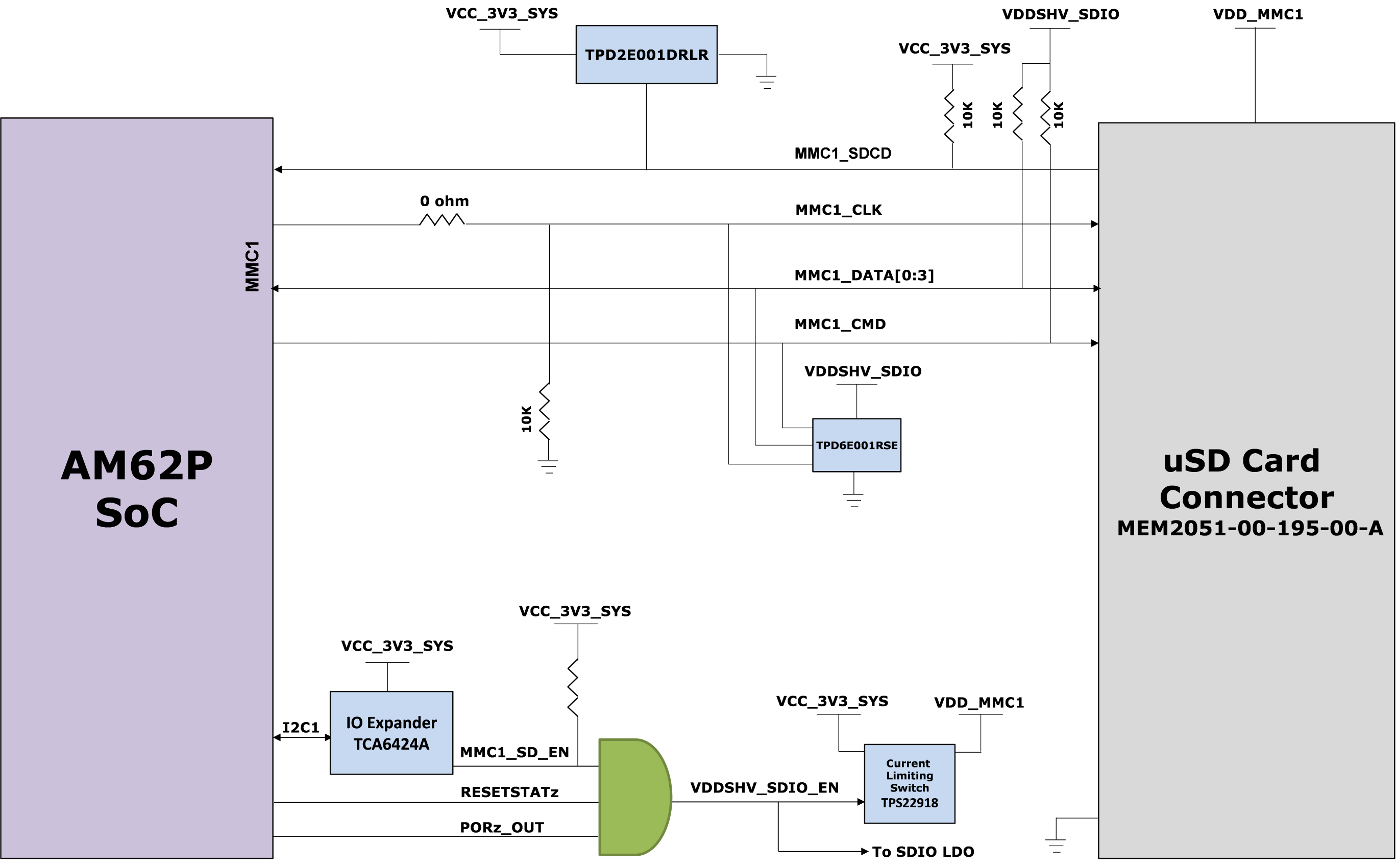SPRUJA2 November 2023
- 1
- Description
- Get Started
- Features
- 5
- 1Evaluation Module Overview
-
2Hardware
- 2.1 Additional Images
- 2.2 Key Features
- 2.3 Interface Mapping
- 2.4 Power ON/OFF Procedure
- 2.5 Clocking
- 2.6 Reset
- 2.7 CSI Interface
- 2.8 OLDI Interface
- 2.9 DSI Interface
- 2.10 Audio Codec Interface
- 2.11 HDMI Display Interface
- 2.12 JTAG Interface
- 2.13 Test Automation Header
- 2.14 UART Interface
- 2.15 USB Interface
- 2.16 Memory Interfaces
- 2.17 Ethernet Interface
- 2.18 GPIO Port Expander
- 2.19 GPIO Mapping
- 2.20 Power
- 2.21 EVM User Setup/Configuration
- 2.22 Expansion Headers
- 2.23 Interrupt
- 2.24 I2C Address Mapping
- 3Hardware Design Files
- 4Compliance Information
- 5Additional Information
2.16.3.2 MMC1 - Micro SD Interface
The SK EVM provides a micro SD card socket of Mfr. Part# MEM2051-00-195-00-A connected to the MMC1 port of AM62P SOC. This supports UHS1 operation including I/O operations at both 1.8V and 3.3V. The Micro SD card interface is set to operate in SD mode by default. For high-speed cards, the ROM Code of the SOC attempts to find the fastest speed that the card and controller can support and then have a transition to 1.8V through a VSEL_SD_SOC signal from the SOC.
TheSD Card connector power is provided using a load switch of Mfr. Part # TPS22918DBVR, which is controlled by ANDing the output of RESETSTATz, PORz_OUT and a GPIO from IO Expander.
An ESD protection device of part number TPD6E001RSE is provided for data, clock, and command signals. TPD6E001RSE is a line termination device with integrated TVS diodes providing system-level IEC 61000-4-2 ESD protection, ± 8-kV contact discharge and ± 15kV air-gap discharge.
 Figure 2-20 uSD Interface
Figure 2-20 uSD Interface